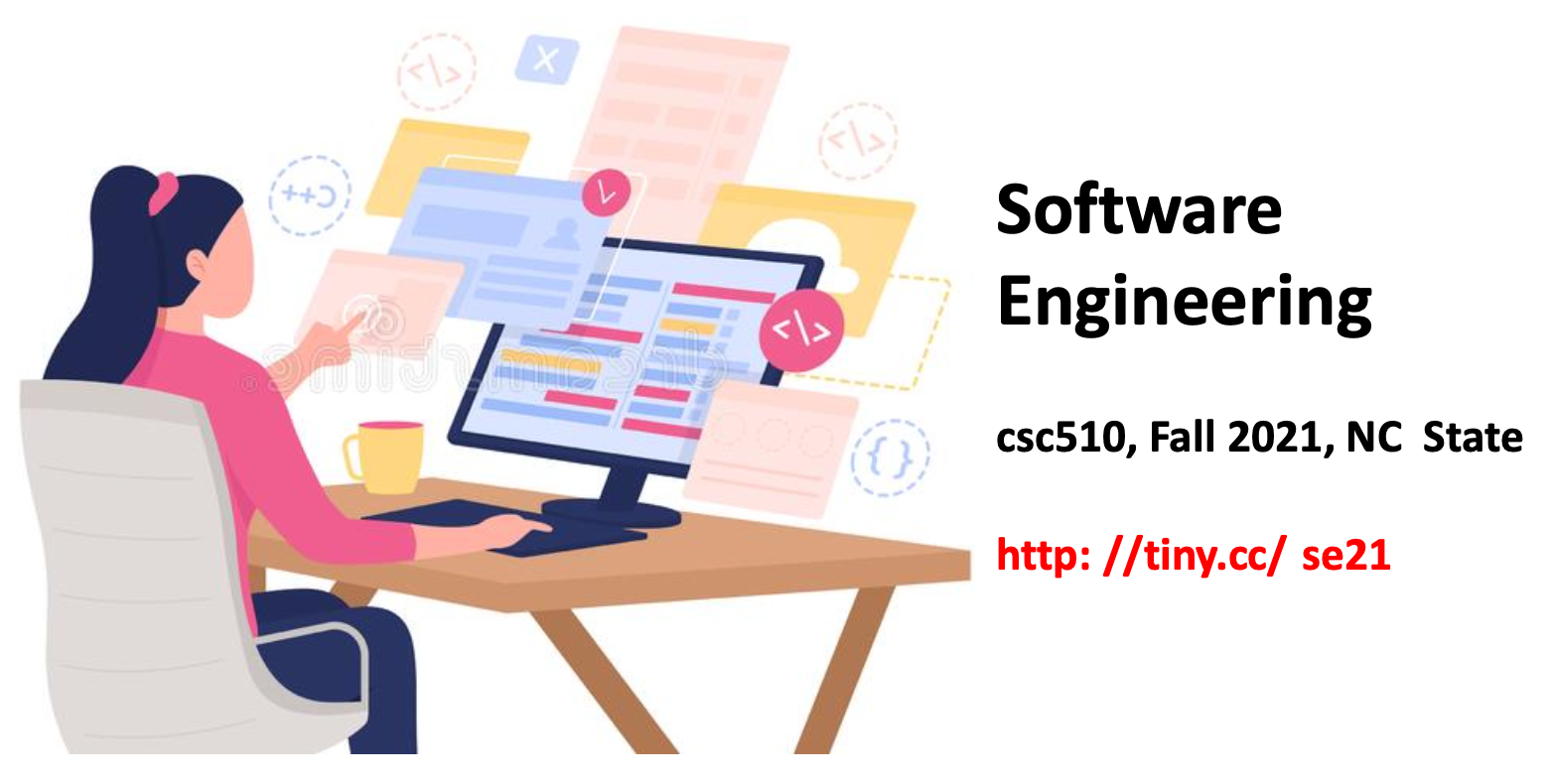
home ::
syllabus ::
timetable ::
groups ::
moodle ::
video ::
© 2021
(that makes me want to use your code)
"I have made this letter longer since I did not have time to make it shorter" -- Blaise Pascal
- Doc is hard
- Doc generation tools are the start, not end, of doc
- Badges are “bling” (not doc)
Can you see quickly,
- the key points
- what the thing is
- where to elarn more?
e.g. Starship
Lightweight (markdown):
Heavyweight (latex):
(Aside: please take a moment to read the sad, sad story abut the invenvtor markdown).
Pdoc3: Python doc strings ⇒ markdown ⇒ web pages
Trans-document documentation tools
Not really
None of these tools solve the documentation problem
Kinds of doc (hit "why not" rarer than "why" rarer than "how" rarer "what"):
-what : point description
- e.g. UML,
- e.g. what pdoc3 generates
- how: common use cases
- See The scikit-learn doco (exploding with examples)
- See [last third of “PCL”[(https://gigamonkeys.com/book/)
- why: top-level motivation
- See Meyer’s OO software construction Chapter1 says nothing about objects
- See “Data mining from scratch” (Joel Grus)
- why-not: choices within the design
- Path not travelled
For a sensational case study, read the original textbook on "C".
- Chapter1 is a work of art
benefit of good documentation
Make the documents something reasonable (e.g. documentation ⇒ verification or documentation ⇒ code generation)
- e.g. Feature model: look like “just” a pretty picture.
- But look again: see the logic? the constraints? the why nots
- this model: 10 variables, 8 rules
- Linux kernel: 6,888 variables, 344000 rules
-
e.g. State transition diagrams
-
David Harel, Statecharts: A visual formalism for complex systems. Science of Computer Programming, 8(3):231-274, June 1987. 10,100+ citations (!!!)
-
Black dot = initial state
-
Dashed lines: parallel work
-
Words on arcs: transition guards
-
Solid line: nested sub-state machines (and all transitions on super-states apply to sub-states
-
Good for scriblling on white board:
- very good for small systems, E.g. internal reasoning within one class
-
Good for readoning about r mission critical kernels of safety critical systems
- Can reason over diagram to look for
- Live lock: loops which never terminate
- Dead locks: states we can never escape
- Can reason over diagram to look for
- e.g.Entity-Relationship Diagrams
- Database design
- Don’t document the code
- Document the data it runs on
- Everything is tables, whose cells can be String, Number, Date, Blob (binary object), Null
- But NOT a nested table
- If many of these things depends on many of those things
- Add a relationship table in between
- A set of sanity checks for “bad” table design
- Store every datum once, and once only
- Avoid, add/ delete/ update anomalies
- Many tools for auto-application generation (GUI screen Generation, mapping to databases).
Interactive GUIs generated from database table design
cross-compile to “C”
- Flows change stuff (and stuff is called Stocks).
- Stocks are real-valued variables , some entity that is accumulated over time by inflows and/or depleted by outflows.
-
To code CM,
- sum in + out_flows_ around each stock;
- multiply that by the time tick dt
- add the result back to the stock
- e.g. v.C += dt*(u.q - u.r) (u,v = before,now)
“What” documentation: UML = ER + procedures
Hints for writing class diagrams
- Don't add gets/setters to class methods
- If there is a relationship classX to classY,
- Don't add variables to X,Y.
- Instead connect them with a line and label if with a line.
- E.g. Professor instructs student
- Also, consider writing fewer classes (this one will just blow your mind).
- e.g. Before: 10,000 LOC, 115 modules, 207 classes
- After: Downsized to 135 LOC, 3 classes (to handle a aprticular applciation)
- e.g. Before: 10,000 LOC, 115 modules, 207 classes
- Brainstorm with CRC cards
- Class, responsibility, collaboration cards
- Walk through specific scenarios
- Hold the card to your chest and say “I update the X”
- And when the responsibility feels wrong, pass it to another class
- Class, responsibility, collaboration cards
History has not been kind to UML
- UML = under-defined modeling language
- Not enough semantics to support verification
- Marian Petre: "UML in practice" ICSE'13, 2013. http://oro.open.ac.uk/35805/
- UML has been described by some as "the lingua franca of software engineering". Evidence from industry does not necessarily support such endorsements. How exactly is UML being used in industry — if it is? Interviews with 50 professional software engineers in 50 companies
| Number | |
|---|---|
| no UML | 35 |
| selective | 11 |
| auto-code gen | 3 |
| retrofit | 1 |
| wholehearted | 0 |
| Who uses what | Number |
|---|---|
| Class diagrams | 7 |
| Sequence diagrams | 6 |
| Activity diagrams | 6 |
| State machine diagram | 3 |
| Use case diagrams | 1 |
- UML useful for
- A 'thought tool'
- For communicating with stakeholders
- For collaborative dialogs
- As the starting point for adaptation (i.e., using a homegrown variant of the "real" notation)
- Two ways to read Petre’14:
- An indictment: after 20 years, UML is still mostly not used and not valued.
- More hopefully, parts of UML are used; the more we learn about which ones, where, why, and how, the better our chances of building something better.



















